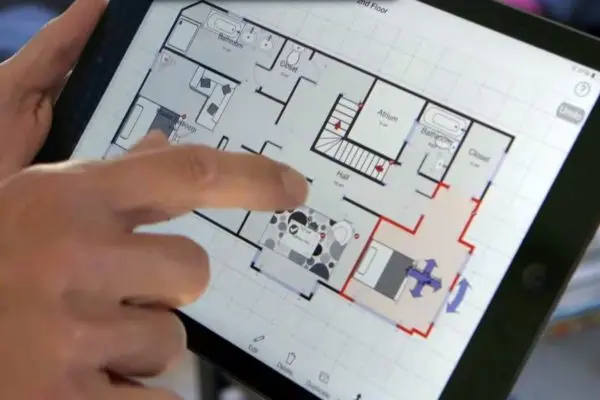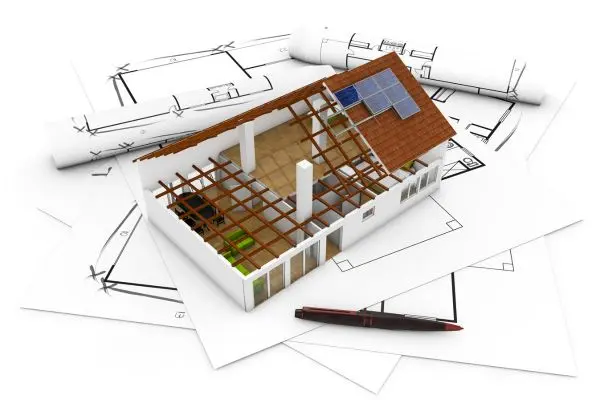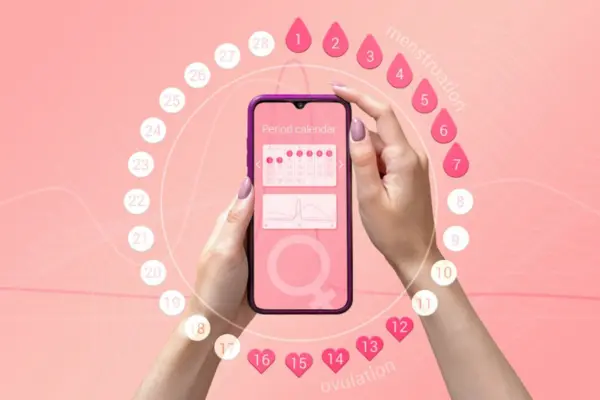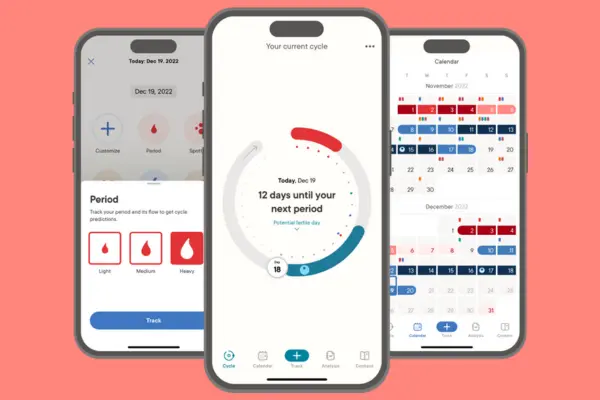XR in Healthcare: Transforming Virtual Surgery and Rehabilitation
Extended Reality (XR) is changing the landscape of healthcare significantly, particularly in fields like surgery and rehabilitation. Surgeons now have tools that allow them to visualize procedures in 3D, making it easier to plan and execute complex operations. XR technologies not only enhance surgical precision but also improve patient recovery by making rehabilitation more effective and engaging.
As XR continues to grow, its role in medical education is also evolving. Students are finding virtual simulations useful for understanding diverse surgical techniques and practicing in a risk-free environment. This leads to better-prepared healthcare professionals who can deliver quality patient care.
The future of XR in healthcare looks promising. With advancements in technology, the potential to reduce patients’ pain and speed up recovery times becomes more apparent. By integrating XR into regular healthcare practices, both patients and providers stand to benefit greatly.
Exploring XR in Healthcare
XR technologies, which include Virtual Reality (VR), Augmented Reality (AR), and Mixed Reality (MR), are shaping healthcare in new ways. These tools improve surgical training, patient education, and rehabilitation processes, making a significant impact on medical practices.
Defining XR: VR, AR, and MR
Virtual Reality (VR) immerses users in a completely digital environment. In healthcare, it is used for training surgeons through realistic simulations. This allows them to practice complex procedures without risk to patients.
Augmented Reality (AR) overlays digital information onto the real world. Surgeons can view critical data such as vital signs or anatomical maps during procedures. This enhances precision and safety in surgeries.
Mixed Reality (MR) combines both VR and AR. It allows interaction with both real and digital objects. Healthcare professionals can manipulate 3D models of organs while viewing a patient. This creates a better understanding of anatomy and improves surgical outcomes.
History of XR in Medical Practice
XR technologies began emerging in the healthcare field during the late 20th century. Early uses included simple VR training tools for medical students. As technology advanced, so did the complexity of these tools, leading to more immersive experiences.
In the 2000s, AR gained popularity in surgery. Surgeons began using heads-up displays that showed patient data in real-time. This helped them make informed decisions without taking their eyes off the procedure.
By 2020, the COVID-19 pandemic highlighted the need for remote training and consultation. XR technologies enabled online surgeries and patient rehabilitation. These advancements showed how critical XR is for the future of healthcare.
Virtual Surgery Applications
XR technologies play a significant role in revolutionizing virtual surgery. They enhance preoperative planning, improve surgical training, and facilitate remote assistance, making surgical procedures safer and more efficient. Here’s a closer look at these applications.
Preoperative Planning
Preoperative planning is essential for successful surgeries. XR allows surgeons to visualize complex anatomy in 3D. This visualization aids in understanding a patient’s unique conditions.
Using XR, surgeons can interact with detailed models of organs and tissues. They can practice techniques and foresee potential challenges before entering the operating room.
This preparation can lead to shorter surgery times and better outcomes. Surgeons can make informed decisions, enhancing care quality and patient safety.
Surgical Training and Simulation
Training is vital for surgical proficiency. XR provides immersive simulations that mimic real-life procedures. Trainees can practice without risks to patients.
In these simulations, users can perform surgeries on virtual patients. They can refine their skills in stitching wounds or navigating surgical instruments.
XR also allows for branching scenarios. Trainees can experience unexpected events, helping them learn to adapt. This training builds confidence and competence in a controlled environment.
Remote Surgical Assistance
Remote surgical assistance is changing the way surgeries are conducted. With XR, skilled surgeons can guide on-site teams from anywhere in the world.
Using augmented reality, experts can project their guidance onto the surgical field. This visual support is especially useful in complex cases where expertise is required.
Additionally, XR can enhance communication during procedures. Surgeons can share insights and demonstrate techniques live, making it easier to solve issues in real-time. This connection broadens access to specialist care and improves surgery success rates.
Rehabilitation and Therapy
XR technology is transforming rehabilitation and therapy by providing tailored and engaging experiences for patients. These advancements help improve outcomes in physical therapy, cognitive rehabilitation, and pain management.
Physical Therapy Support
XR tools offer physical therapy sessions that can be both fun and effective. Patients use virtual environments to perform exercises while receiving real-time feedback. This interactivity can boost motivation, encouraging patients to practice more frequently.
- Customization: Therapists can customize exercises to meet individual patient needs, ensuring they can work at their own pace.
- Progress Tracking: Many XR systems allow for tracking progress over time. This data helps therapists adjust treatment plans based on patient improvements.
- Engagement: By using gamified experiences, patients are often more engaged in their rehabilitation routines. This results in better adherence to therapy schedules.
Cognitive Rehabilitation Tools
In cognitive rehabilitation, XR can provide immersive environments that support memory and problem-solving skills. Patients can interact with virtual objects to practice daily tasks.
- Real-World Scenarios: Simulated environments mimic real-life situations, making practice more relevant and helpful.
- Personalized Tasks: Therapists can design specific challenges based on the patient’s cognitive abilities. This approach helps ensure that patients remain challenged but not overwhelmed.
- Feedback Mechanisms: XR tools often include immediate feedback. This helps patients understand their progress and areas needing improvement.
Pain Management Techniques
XR has shown promise in pain management by immersing patients in calming virtual worlds. These environments can distract patients during painful procedures or recovery.
- Distraction: Engaging with a virtual environment can shift focus away from pain, reducing discomfort.
- Relaxation Techniques: Some XR applications guide users through breathing exercises or meditation in soothing settings. This promotes overall relaxation.
- Monitoring Pain Levels: Patients can relay their pain levels during XR sessions, allowing for adjustments in approach. This feedback is crucial for optimizing pain management strategies.
Benefits of XR in Healthcare
XR technology provides unique advantages in healthcare. It enhances education for medical professionals, improves patient outcomes during treatment, and increases accessibility to health services.
Enhanced Medical Education
XR transforms medical education by offering immersive learning experiences. Students can practice procedures in a safe virtual environment. This method allows for repetitive learning without risk to real patients.
Key advantages include:
- 3D Visualizations: Students can explore human anatomy in greater detail, leading to better retention.
- Simulated Scenarios: Medical professionals can face challenging situations and develop critical thinking skills.
Institutions report that trainees using XR have higher confidence levels when performing procedures. These experiences prepare them better for real-life situations.
Improved Patient Outcomes
XR plays a key role in enhancing patient outcomes, especially in surgical procedures. Surgeons can use augmented reality (AR) to overlay important information during operations. This helps in planning and executing complex surgeries.
Benefits include:
- Precision and Accuracy: Surgeons can visualize anatomy better, reducing risks during operations.
- Faster Recovery Times: Patients often experience less pain and quicker recovery periods after XR-assisted procedures.
In rehabilitation, XR technology offers tailored programs. Patients engage in interactive exercises, which may improve motivation and adherence to therapy.
Increased Accessibility
XR technology breaks barriers to healthcare access. Through telemedicine and virtual consultations, patients can receive care without needing to travel. This is especially beneficial for those in remote areas.
Advantages include:
- Remote Monitoring: Healthcare providers can track patient progress easily through XR tools.
- Cost-Effective Solutions: VR and AR reduce the need for physical resources, making healthcare delivery more affordable.
These tools open doors for patients who may otherwise struggle to access necessary services, leading to more inclusive healthcare experiences.
Challenges and Considerations
Adopting XR technology in healthcare presents several challenges that need attention. Data privacy, effective integration, and cost can impact how these technologies are utilized. Each area requires thorough consideration to achieve successful implementation.
Data Privacy and Security
Data privacy is a critical concern in the use of XR technologies. Patient data must be protected against unauthorized access and breaches. Healthcare providers must comply with regulations like HIPAA to ensure sensitive information remains confidential.
Implementation of strong cybersecurity measures is essential. This includes encryption, secure access protocols, and regular security audits. Additionally, training staff on data protection practices can help to minimize human error.
It is vital to establish clear policies regarding data sharing and usage. Patients should be informed about how their data will be used and stored, fostering trust in the technology.
Integration with Existing Systems
Integrating XR technology with current healthcare systems can be complex. Many hospitals and clinics already use electronic health records (EHR) and other software. Seamless integration is necessary for efficient workflows.
Careful consideration must be given to software compatibility. Systems need to communicate effectively to avoid disruptions. Training staff on how to use new XR applications alongside existing systems is also crucial for success.
Healthcare institutions may face resistance when introducing new technologies. Clear communication about the benefits of XR in improving patient care can encourage acceptance. Support from IT professionals during the transition can make this process smoother.
Cost and Resource Requirements
The financial investment for XR technology can be significant. Costs include hardware, software, and ongoing maintenance. Healthcare facilities must evaluate their budgets to determine if they can invest in this technology.
Training staff to use XR tools also involves costs, both financial and time. Institutions may need to hire experts or conduct workshops, which can strain resources.
To manage these expenses, healthcare facilities can explore partnerships with technology companies. They can also consider phased implementations, starting with small pilot projects. This approach allows for assessing effectiveness and adjusting budgets based on the results.
Technological Advances in XR
Recent progress in extended reality (XR) has led to significant changes in healthcare, especially in virtual surgery and rehabilitation. Key advancements include improvements in hardware, software, and interactive design. These developments enhance the medical training experience and improve patient outcomes.
Hardware Innovations
New hardware has made XR technology more effective in healthcare. Devices like headsets and haptic gloves are at the forefront of this change.
- Headsets: Modern headsets offer high-resolution displays and improved field of view, which allows users to experience a more immersive environment.
- Haptic Feedback: Gloves and pads equipped with sensors provide touch sensations. This feature helps surgeons feel the surgical environment as if it were real.
These innovations create a more realistic experience for both training and actual surgical procedures. Additionally, portable XR devices are gaining traction, enabling healthcare professionals to use this technology in various settings.
Software Developments
Software advancements are crucial to enhancing the XR experience in healthcare. New applications focus on simulations and user interactivity.
- Simulations: Software can provide lifelike surgical scenarios for medical training. Trainees can practice procedures repeatedly without real-world risks.
- Integration with AI: Advanced software uses artificial intelligence to analyze user performance. This analysis helps identify areas needing improvement.
Such software makes training more effective and tailored to individual needs. Furthermore, continuous updates ensure that the software remains relevant and beneficial for all levels of healthcare professionals.
Trends in Interactive Design
Interactive design trends are shifting how XR is used in healthcare. Emphasis is placed on creating engaging and intuitive user experiences.
- User-Centric Design: Developers focus on user needs, ensuring that interfaces are easy to navigate. This approach helps users feel comfortable in virtual environments.
- Adaptive Learning: Interactive systems can adjust based on user skill level. Beginners might see step-by-step instructions, while experienced users face more challenging scenarios.
By incorporating these trends, XR technology becomes more accessible and useful in medical training and rehabilitation. These design advancements play a significant role in maximizing the utility of XR in healthcare settings.
Case Studies and Success Stories
Extended reality (XR) technologies are making a positive impact on healthcare. Many case studies highlight their benefits in virtual surgery and rehabilitation.
One example is a surgical training program using XR. Surgical residents can practice complex procedures in a safe, virtual setting. This helps them build skills without risks to real patients.
Another case involves rehabilitation for stroke patients. XR allows patients to engage in interactive exercises. This approach is shown to improve recovery by making therapy more enjoyable.
A study showed that patients using XR for pain management reported lower discomfort during rehabilitation. This method helps distract them from pain during therapy sessions.
In some hospitals, XR is used for pre-operative planning. Surgeons can visualize the surgical area in 3D. This preparation leads to fewer complications during actual surgeries.
Benefits are also seen in patient communication. For those with language difficulties, XR can simulate conversations in a virtual space. This helps them practice and improve their language skills.
These examples show that XR fosters both learning and healing. As technology continues to advance, more success stories will emerge, making healthcare better and more effective.
Future of XR in Medical Fields
XR technology is expected to reshape various aspects of healthcare, including surgical practices and rehabilitation methods. As advancements continue, there will be increased collaboration across disciplines, leading to more unique and effective solutions for patient care.
Predictions and Emerging Technologies
As XR technology evolves, predictions point to more immersive simulations for surgical training and treatment planning. For instance, augmented reality (AR) may enable surgeons to see critical structures during operations, reducing errors.
Virtual reality (VR) could revolutionize pre- and post-operative care, allowing patients to visualize their procedures and recovery processes. Such technologies may enhance understanding and reduce anxiety. Emerging tools will likely focus on AI integration, providing real-time data and personalized experiences.
Interdisciplinary Collaboration
Collaboration among different fields will play a vital role in developing XR applications. Healthcare professionals, engineers, and designers will come together to create effective tools that meet specific needs.
For example, partnerships between medical experts and tech companies can lead to advanced XR training modules. These modules may help improve surgical skills and boost confidence in young surgeons. Furthermore, this collaboration can enhance rehabilitative practices, creating tailored XR solutions for individual patients.
Patient-Centered XR Solutions
Future XR applications will prioritize patient needs, making them more user-friendly and effective. This shift will include personalized rehabilitation programs that adapt to each patient’s progress and preferences.
Combining VR and gamification, patients may find exercises more engaging. For instance, patients could participate in interactive games that aid recovery while making the process enjoyable. This approach can significantly improve adherence to rehabilitation protocols, leading to better outcomes.
Conclusion
XR technology is changing how healthcare professionals approach surgery and rehabilitation. With tools like virtual reality, surgeons can plan operations with better precision.
Benefits of XR in Healthcare:
- Enhanced Visualization: Surgeons can see 3D models of body parts, helping them prepare for the actual procedure.
- Patient Engagement: XR allows patients to understand their surgeries and recovery plans, making them feel more involved.
- Improved Recovery: Rehabilitation programs that use XR show promise in speeding up recovery times and reducing pain.
Studies show that XR can improve surgical outcomes. For instance, it aids in minimizing complications and scarring during procedures. Its role in rehabilitation also suggests higher engagement from patients during recovery.
Healthcare will likely continue to embrace these technologies. As XR tools become more integrated, they can provide even better support for both medical teams and patients. Overall, the future of surgery and rehabilitation looks promising with the use of extended reality.
As this field evolves, it will be exciting to see how XR shapes patient care and medical education. The potential benefits are vast, making it a vital area for further research and implementation.
Frequently Asked Questions
This section answers common questions about XR in healthcare, focusing on its impact on surgical procedures, rehabilitation, job opportunities, software, access, and costs for providers.
How is extended reality (XR) reshaping surgical procedures in healthcare?
XR technology is changing how surgeries are performed. Surgeons can visualize patient data in 3D during operations. This helps them make better decisions and improve outcomes. Training with XR simulations also allows new surgeons to practice in a risk-free environment.
Can you provide examples of how XR technology is implemented in rehabilitation?
XR is used in rehabilitation to create engaging and interactive exercises. For instance, patients can use virtual environments to practice movements. This can enhance motivation and participation, leading to better recovery rates. Such applications are especially helpful in physical therapy settings.
What kind of career opportunities exist within the XR health industry?
The XR health industry offers a range of career paths. Job roles include XR developers, healthcare educators, and technical support specialists. There are also positions for medical professionals who use XR as part of treatment and training.
What are some popular virtual reality therapy software used by professionals?
Several VR therapy software options are popular among professionals. Examples include VR therapy programs designed for pain management, anxiety, and PTSD. These programs offer immersive experiences that can improve patient engagement and outcomes in therapy sessions.
How can one access XR health services and what does the login process typically involve?
Accessing XR health services often starts with a referral from a healthcare provider. Patients may need to create an account on a specific platform. The login process usually requires basic personal information and follows security protocols to protect private health data.
What are the financial considerations for healthcare providers looking to implement VR therapy equipment?
Providers must consider the initial cost of VR equipment and software. They may also need to factor in ongoing maintenance and training expenses. Budgeting for these items is crucial for successfully integrating XR into their healthcare services.





